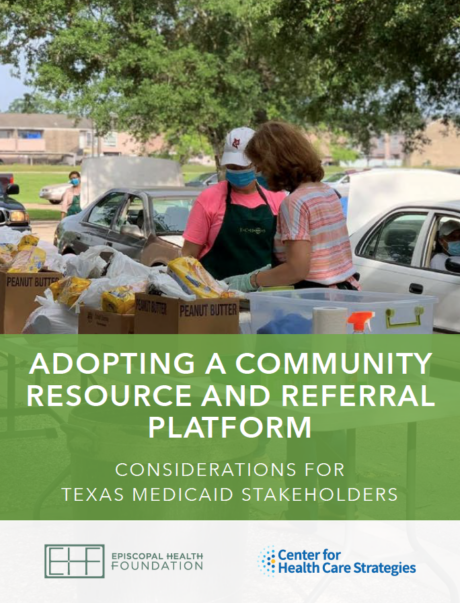As the Texas Health and Human Services Commission releases a groundbreaking action plan to address non-medical drivers of health (NMDOH) through Medicaid, a new report examines the many platforms designed to connect Medicaid populations with community resources to address non-medical needs like food insecurity, housing, transportation and much more.
The report researched and written by the Center for Health Care Strategies and funded by EHF shares experiences with various community resource and referral platforms in Texas. The platforms are used by clinics, managed care organizations and other stakeholders in the Texas Medicaid program to coordinate screening for patient/member non-medical needs, identify community resources, and facilitate referrals to community-based organizations and services. These platforms help these stakeholders better understand, track, and manage interventions to address non-medical needs.
Key takeaways from the report:
- Medicaid programs across the country are working to address the non-medical drivers of health (DOH) and improve outcomes for their members. However, coordination of medical and non-medical services can be challenging.
- Community resource and referral platforms can support this type of coordination by supporting screening, providing a directory of non-medical services, and facilitating the referral process.
- Regional projects in Texas that aim to develop Community Information Exchanges (CIE) or CIE-like structures are incorporating community resource and referral platforms to share data across multiple platforms. These projects are in their early stages but show promise to improve care coordination and data usability.
